Quick Test Professional - The starters Guide
Chapters
A word on smart Identification process
QTP has Smart Identification, which is more flexible process for identifying objects provided it is enabled in Object Identification settings.
Smart Identification properties are:
- Base Filter
- Optional Filter
Base Filter Properties: It contains the fundamental properties of a specific test object class, whose values unable to change, without changing the essence of the original object.
Optional Filter Properties: The other properties that can help identify objects.
To enable Smart identification for an object:
Step 1: Go to "Tools" select "Object Identification", Now Object Identification Dialog Opens. Select the Environment, Object Class and check the Enable Smart Identification as shown:
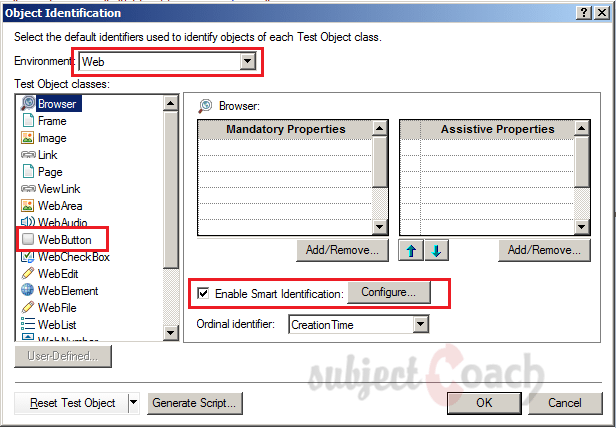
Step 2: Click Configure button and choose the Base Filter and Optional Filter Properties
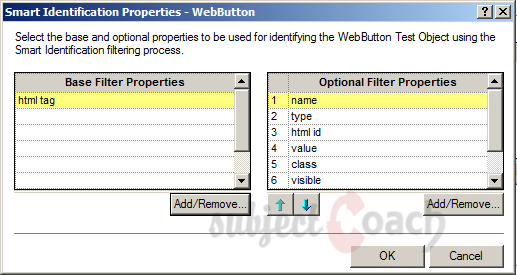
Step 3: Add Properties in Base Properties apart and also we can add/remove Optional Filter Properties. Click "OK".
Note: Same properties cannot be part of Mandatory and also Assistive Properties
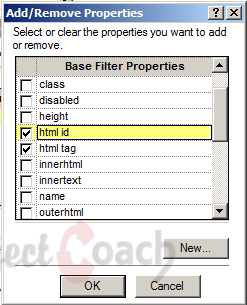
Step 4: Cross checking, Smart Identification is enabled after Adding object of that type in the Object Repository when Smart Identification is set to TRUE. (For disable the Smart Identification, set to False).
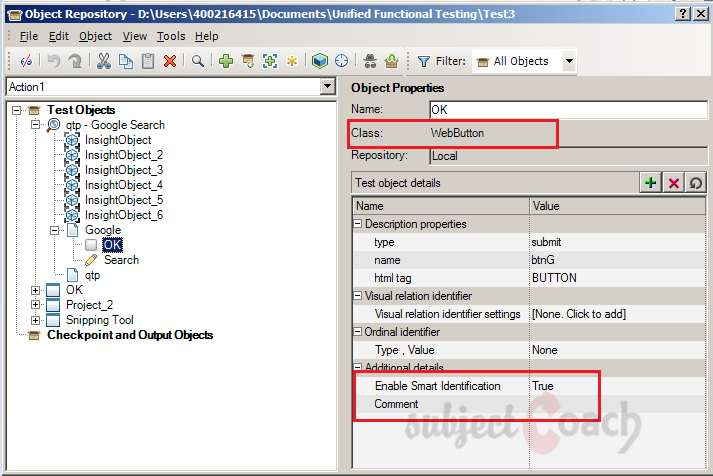
Step 5: To disable a test Level at test script level, under "Settings" of "File" Menu as shown:
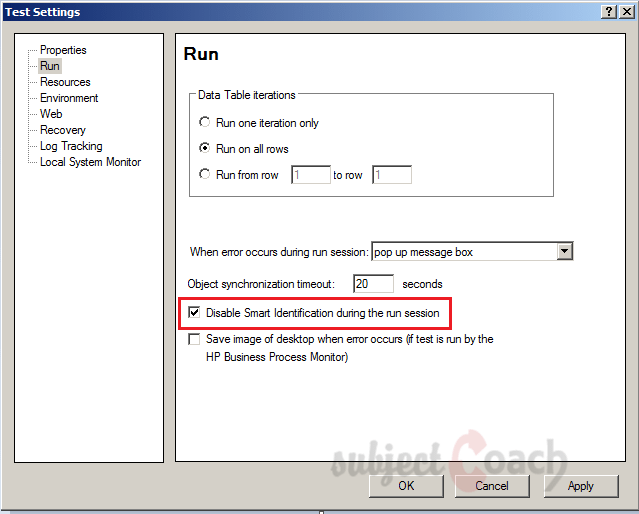
Step 6: If the Smart Identification is disabled then it’s unable to apply smart identification for any object during script execution.
Step 7: QTP will not use Smart Identification for recognizing in future, even though we have enabled it afterword’s, if the objects are added with Smart Identification as Off.
In the next part, we will cover debugging process in QTP
Description
In this tutorial, we will get to know Quick test professional. At the time of writting QTP is at version 12.2. This tutorial is subdivided into multiple parts as shown below
- What is QTP
- Automating tests
- Environment
- Recording and Playback
- Object Repository
- Actions
- Data Table
- Checkpoints in QTP
- Synchronization
- Smart Identification
- Debugging and Error handling
- Recovery Scenarios
- Environment Variables
- Library Files
- Test Results
- GUI Objects
- Virtual Objects
- Accessing Databases
- Working with XML
- Descriptive Programming
- Automation Object Model
- A work on Frameworks
Leave your feedback for us, Feedback help us improve our tutorials.
Prerequisites
Some knowledge on Windows OS and VB Script is recommended
Audience
Students who wish to learn QTP
Learning Objectives
Learn QTP
Author: Subject Coach
Added on: 16th Mar 2015
You must be logged in as Student to ask a Question.
None just yet!